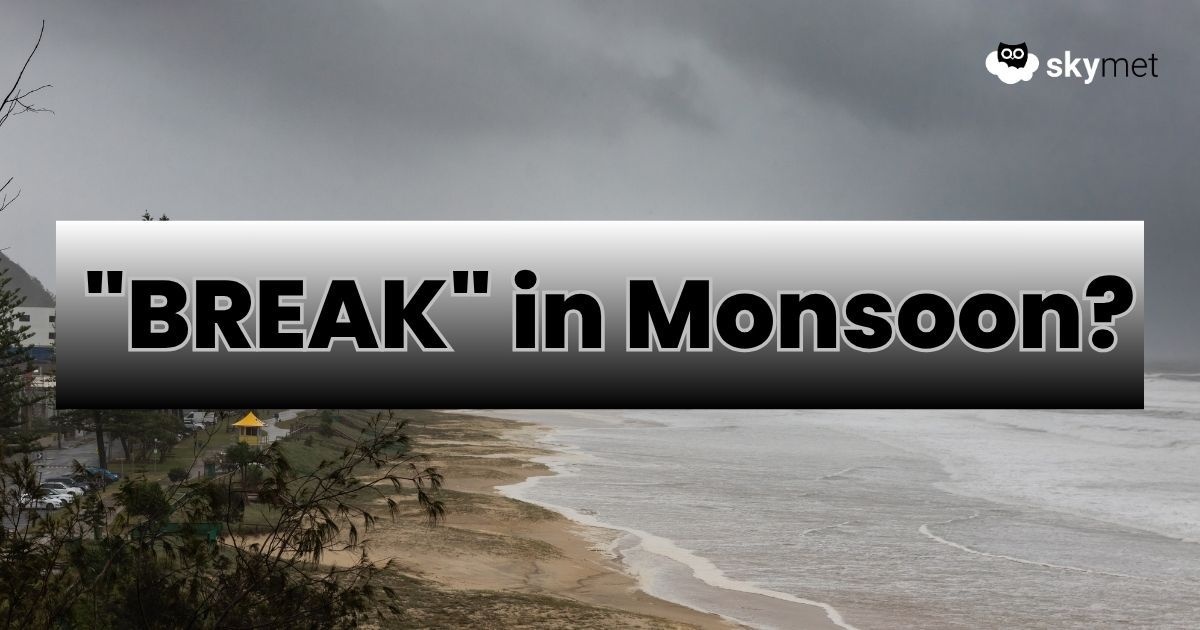ENSO variability is intimately linked to the changing status of the oceanic heat content. Rising temperature of the sea surface during El Niño builds the ocean heat content, and La Niña conditions, if any, lower the heat potential in the equatorial Pacific Ocean. ENSO-Neutral status is the most complicated scenario to work out the ocean heat content.
Tsunami Update: Is Indian Coastline Safe from the Tsunami? All You Need to Know About the Powerful 8.8 Magnitude Earthquake in Russia’s Far East
All the four Niño indices seldom have similar temperature anomalies. Their varying signs, both at the surface and sub-surface along the equatorial region, vitiate the temperature differential. The sea surface temperature analysis for the last two weeks shows warmer-than-average waters across much of the equatorial Pacific. Even global SSTs remain substantially above average. As per BoM, the monthly averaged SSTs for June 2025 were the third warmest on record. Monthly averaged SSTs were the second warmest on record for each respective month from Jan to May 2025.
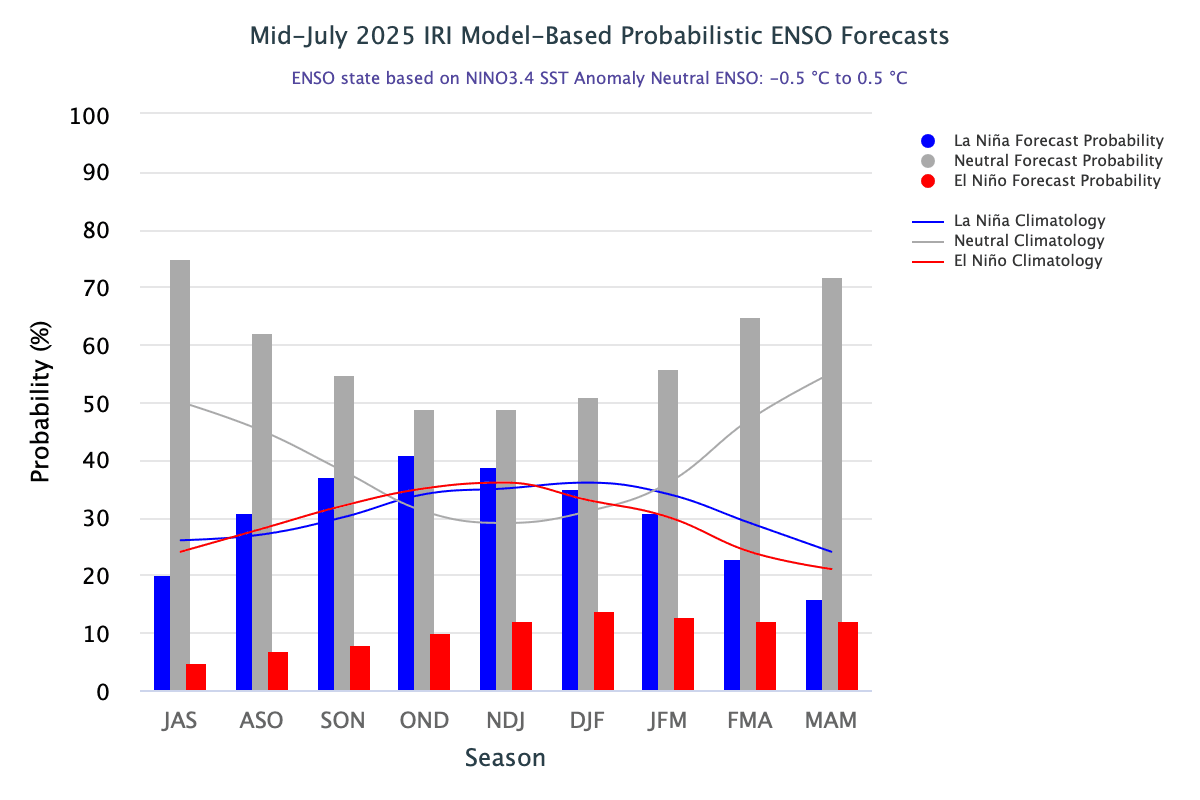
ENSO : As of mid-July, the equatorial Pacific remains in an ENSO-Neutral state, with sea surface temperature in the Niño 3.4 region close to average. Both atmospheric and oceanic indicators continue to show neutral conditions. The sub-surface temperature anomalies were weakly positive and nearly unchanged from last month, indicating minimal changes in the thermal structure beneath the surface of the central and eastern Pacific Ocean.
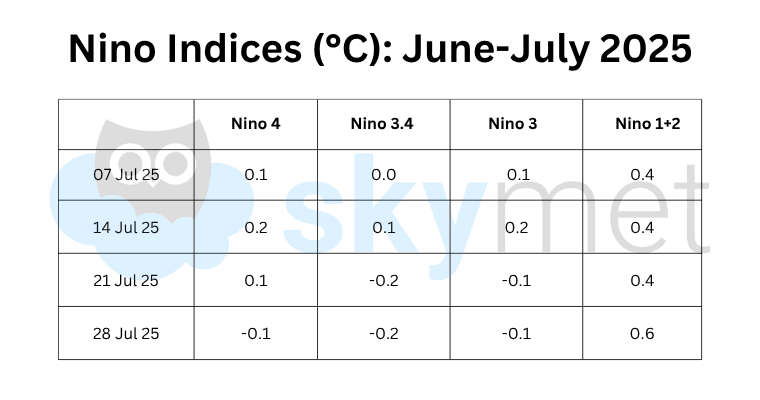
The SST anomaly in the Niño 3.4 region during the Apr–Jun 2025 season was -0.05°C, and for June 2025, it was +0.04°C. Going forward, the SST anomaly for the May–July 2025 season works out to be -0.03°C, and for the month of July, it is estimated at -0.07°C. The most recent weekly average on 28 July 2025 was -0.2°C. The latest seasonal, monthly, and weekly values suggest that the tropical Pacific will remain ENSO-Neutral through the southwest monsoon season.
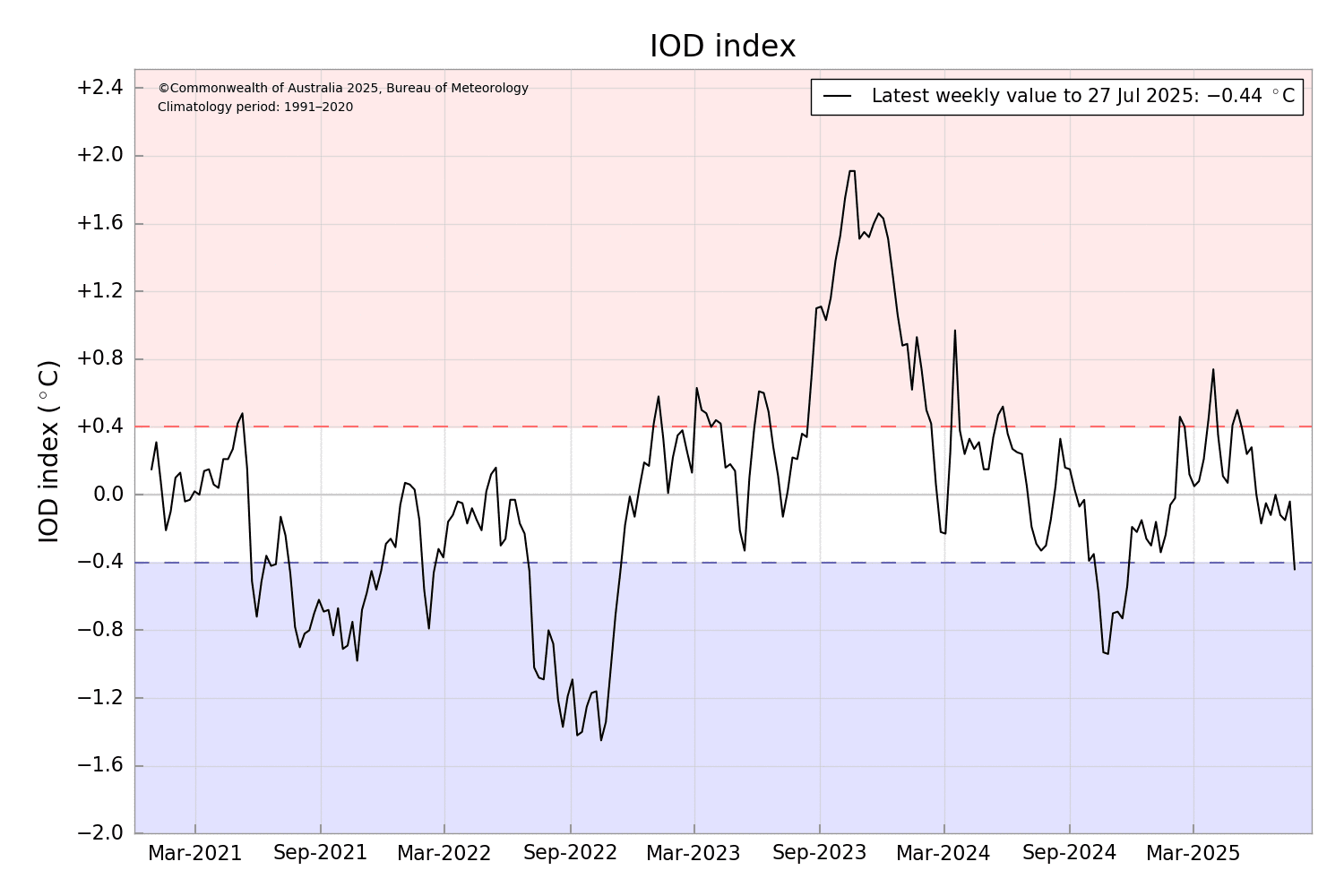
IOD: The Indian Ocean Dipole is neutral. The latest value of the IOD index for the week ending 27 July 2025 was -0.44°C, which just exceeds the negative threshold of -0.4°C. The Bureau’s model predicts a neutral state of the IOD until at least August, dipping into the negative IOD range for Sep–Oct, before returning to a neutral IOD value again in November.
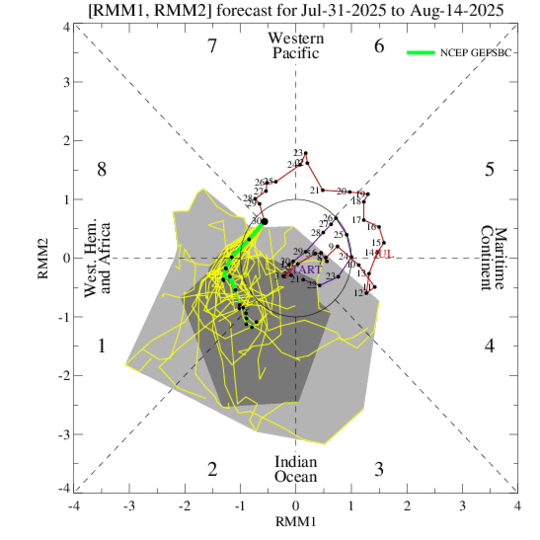
MJO: Consistent with the earlier forecast, the Madden-Julian Oscillation remained coherent through late July. After regaining amplitude over the Maritime Continent, the MJO pulse propagated eastward across the Western Pacific, maintaining moderate amplitude during the past week. There was an uptick in stormy activity over that region during the period. The forecast favours continued eastward propagation over the Western Hemisphere and into the Indian Ocean during the next couple of weeks. The subdued amplitude of the MJO may not offer constructive support for the buildup of any monsoon system in the Indian seas during the first half of August 2025.
Weak westerly currents, coupled with an increase in stormy conditions over the Western Pacific, have slowed down the overall monsoon activity over the Indian subcontinent. As usually happens in August, ‘break-monsoon’ conditions are likely to continue through the next week. It may not be a copybook style of ‘break’, yet the quantum of rainfall will decrease pan-India. It is difficult to predict the duration of the lean phase. In any case, the revival will necessitate the formation of a fresh monsoon system over the Bay of Bengal.


